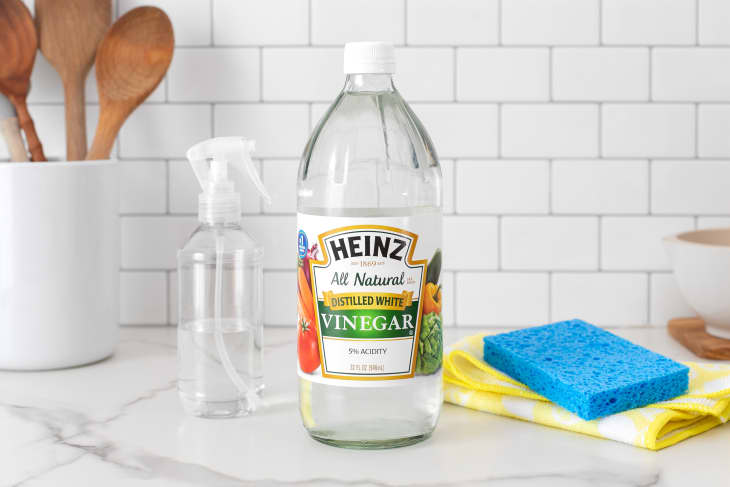What Is Vinegar and What Makes It a Good Cleaner?
Chances are you probably have at least one type of vinegar, if not more, in your kitchen cabinets right now. From plain ol’ distilled white vinegar and apple cider vinegar (or ACV, if you will) to balsamic, red wine, sherry, and Champagne vinegars, vinegar is a staple in our dressings, marinades, and our dill pickle brines.
And some types of vinegar have a second talent: cleaning! Here’s the science behind what makes vinegar so useful as a cleaning agent.
What Is Vinegar Exactly?
Have you ever tasted wine that’s turned? I’ll spare you the test, if you haven’t. It tastes pretty sour, kind of like that bottle of vinegar in your pantry — or rather, exactly like that bottle of vinegar in your pantry.
Let’s back up a bit: To make wine, the sugar has to be converted to alcohol in a process known as fermentation. After the sealed bottle has been opened (or sometimes before, if the cork has been compromised), there’s a second kind of fermentation that happens. During this process, the alcohol is turned into acetic acid, the main compound in vinegar.
Acetic acid isn’t the only compound in vinegar, but it’s the one that makes vinegar acidic. In fact, with a pH of 2.4, distilled white vinegar is a pretty strong acid, more acidic than coffee or orange juice, but still less acidic than your stomach juices or, say, the liquid inside batteries (luckily).
What’s the Right Type of Vinegar for Cleaning?
Dozens of different types of vinegar come from this double fermentation: Balsamic comes from a unique blend of grapes from southern Italy, wine vinegar from red or white wine grapes, apple cider vinegar from apple cider, rice vinegar from rice, and so on.
The only exception is white vinegar, which is usually made of laboratory-produced acetic acid combined with water. White vinegar is the most acidic, which can make it a potent cleaner, but it can also make it too strong for some types of cleaning, in which case you can dilute it with water — or go with something milder, like apple cider vinegar.
More on Cleaning with Vinegar
How Does Vinegar Work?
Vinegar’s acidity is what makes it such a good cleaner. Because vinegar is so acidic, it can counteract some icky buildups. It can dissolve away soap scum, brines left by hard water, and glue left behind by stickers.
Vinegar is great for giving windows and mirrors (use a combination of vinegar and water and wipe with a newspaper instead of a paper towel to avoid streaks), no-wax floors, and wood paneling or cabinets an extra-clean shine.
Another use for vinegar? Getting rid of stubborn stains. Lots of stains, whether from sweaty armpits or grass, are slightly acidic, which means they will dissolve away in the presence of another acid, like vinegar.
A paste of vinegar and baking soda can dissolve set red wine stains. Vinegar can even get cat or dog urine out of carpets or other cloths and, bonus, that pungent smell can keep pets away from places you don’t want them to go.
When Not to Use Vinegar
Be careful, though, because vinegar that is too concentrated can stain delicate fabrics. And there are other surfaces where vinegar can do more harm than good.
Using it on natural stone like granite or marble can scratch it. And though some people use vinegar as a disinfectant, it’s not approved for this purpose by the Centers for Disease Control and Prevention (CDC) because there’s no evidence that vinegar can get rid of some of the most harmful pathogens that lurk on surfaces, like salmonella.
Do you use vinegar to clean your kitchen?
